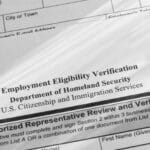As we’re preparing tax returns, we’ve noticed a lot more activity in non-bank-qualified bonds. As you’re pricing these bonds, you’ll want to take into consideration the tax implications. The projected yield may not be what you think it is.
Over the years, there has been lots of discussion regarding the Tax Equity and Fiscal Responsibility Act of 1982 (TEFRA), P.L. 97-248, added Sec. 291, which includes what is commonly known as the ‘TEFRA disallowance.’
The TEFRA penalty disallows 20% of the bank’s interest expense associated with the purchase or carrying of tax-exempt investments.
In 2010, the Vainisi case cleared up a lot of the uncertainty as to whether an S Corporation was subject to this penalty. In this case, the IRS stated that it would not apply the TEFRA penalty to an S Corporation bank unless the bank was a C Corporation during the three immediately preceding tax years.
When an S Corporation Bank Can Apply
It is important for S corporation banks to remember that the TEFRA disallowance exemption applies only when an S corporation bank invests in bank-qualified obligations. If they are not bank-qualified, under Sec. 265 the bank still will be subject to an interest expense disallowance equal to 100% of the proportionate amount of the bank’s interest expense associated with the non-bank-qualified obligations.
Contact a K·Coe advisor with any questions.









